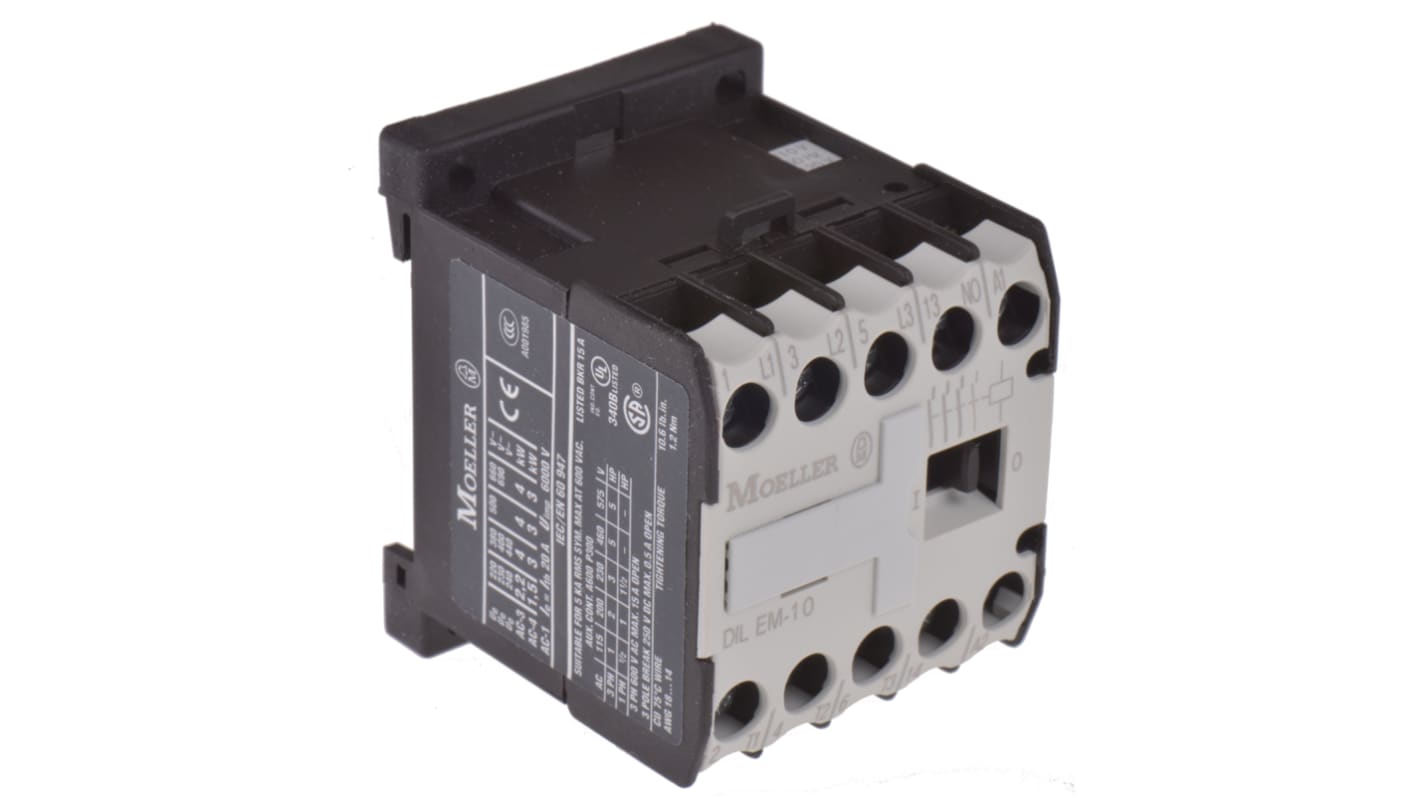- RS Stock No.:
- 323-022
- Mfr. Part No.:
- 051783 DILEM-10(110V50HZ,120V60HZ)
- Manufacturer:
- Eaton
11 In Global stock for delivery in 4-6 working days, delivery time may vary for certain locations or FTZ
Added
Price Each
MYR313.13
| Units | Per Unit |
| 1 + | MYR313.13 |
- RS Stock No.:
- 323-022
- Mfr. Part No.:
- 051783 DILEM-10(110V50HZ,120V60HZ)
- Manufacturer:
- Eaton
Legislation and Compliance
- COO (Country of Origin):
- DE
Product Details
Eaton Contactor, 400V AC Contact Voltage, 1 Auxiliary Contact - DILEM Series - 051783 DILEM-10(110V50HZ,120V60HZ)
If your system needs its electrical circuit to open and close repeatedly, turn to this contactor from Eaton. With a mechanical lifespan of up to 10 million operations, it's a long-serving option for use with industrial applications. The screw terminals hold wiring securely and need minimal maintenance, even in vibrating conditions. Compact dimensions of 58 (L) x 45 (W) x 83mm (D) mean the unit takes up minimal space in your setup. Contactors like this are suitable for protecting low-voltage electrical loads, such as lighting and heating systems.
Features & Benefits
• Meets UL508 safety standards for industrial equipment used to control or protect electric motors
• IP20-rated housing is touch-proof and safeguarded against objects larger than 12mm
• Protected against short circuits, so there's minimal risk of electrical faults causing damage to equipment
• Fast-acting for efficiency, with maximum opening and closing delays of 45ms and 21ms respectively
• As the unit's insulated, it helps to protect you against electric shocks
• IP20-rated housing is touch-proof and safeguarded against objects larger than 12mm
• Protected against short circuits, so there's minimal risk of electrical faults causing damage to equipment
• Fast-acting for efficiency, with maximum opening and closing delays of 45ms and 21ms respectively
• As the unit's insulated, it helps to protect you against electric shocks
Is this contactor shock-resistant?
Yes, this contactor resists shock as well as damp heat, so it's safe to use in demanding environments.
Specifications
Attribute | Value |
|---|---|
| Coil Voltage | 110 V ac |
| Number of Poles | 3 |
| Contact Voltage Rating | 400 V ac |
| Contact Current Rating | 9 A |
| Series | DILEM |
| Power Rating | 4 kW |
| Range | xStart |
| Normal State Configuration | 3NO |
| Number Of Auxiliary Contacts | 1 |
| Terminal Type | Screw |
| Length | 58mm |
| Width | 45mm |
| Depth | 83mm |
| Minimum Operating Temperature | -25°C |
| Pole and Throw Configuration | 3P |
| Maximum Operating Temperature | +40°C |

